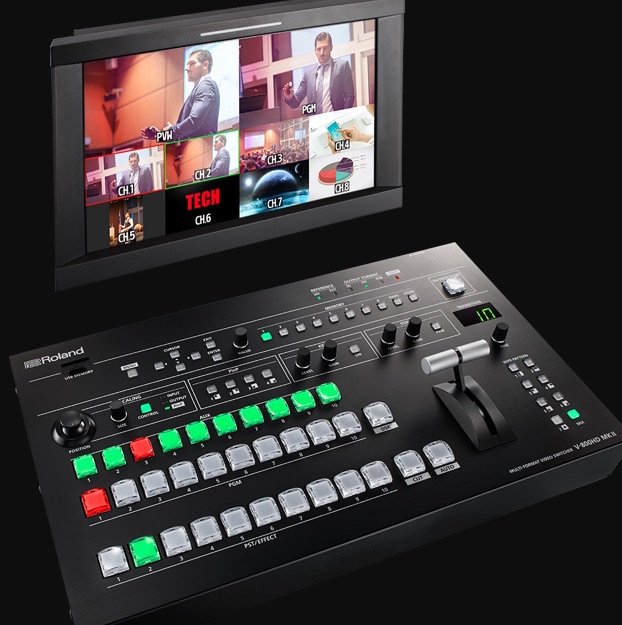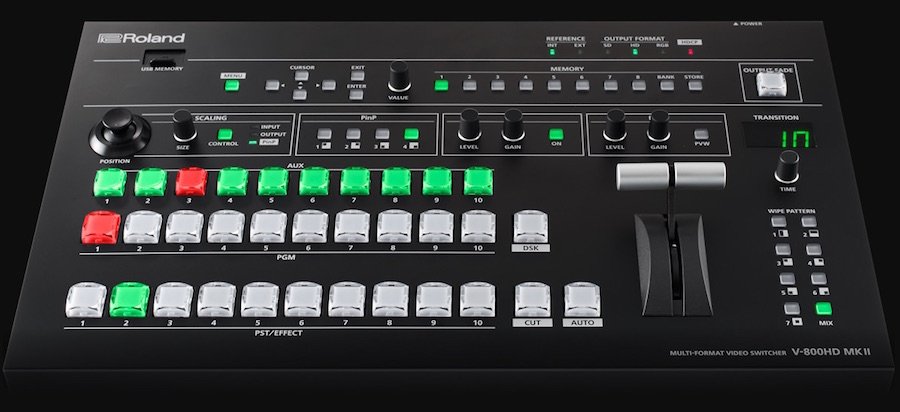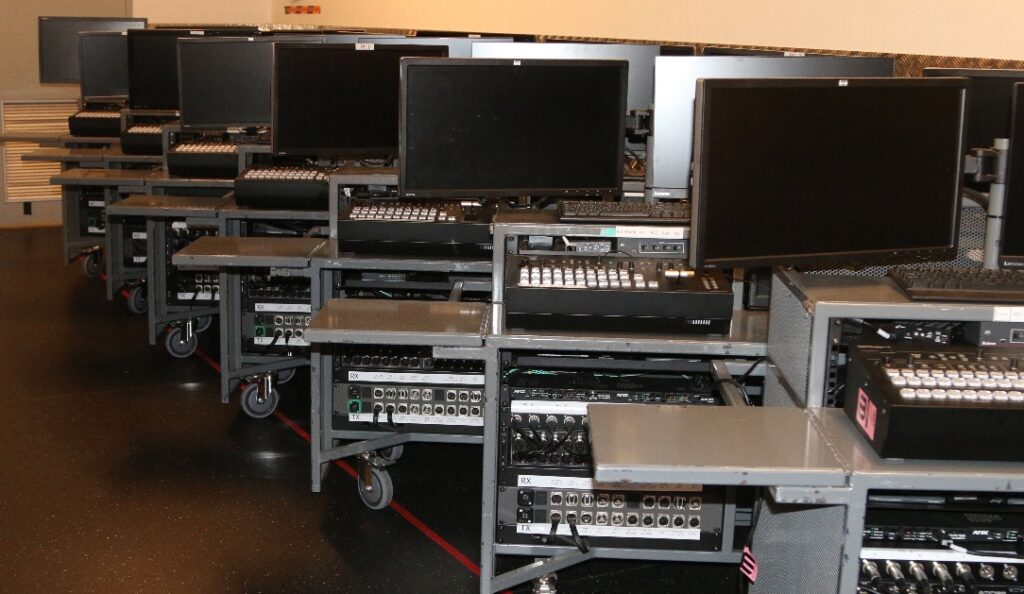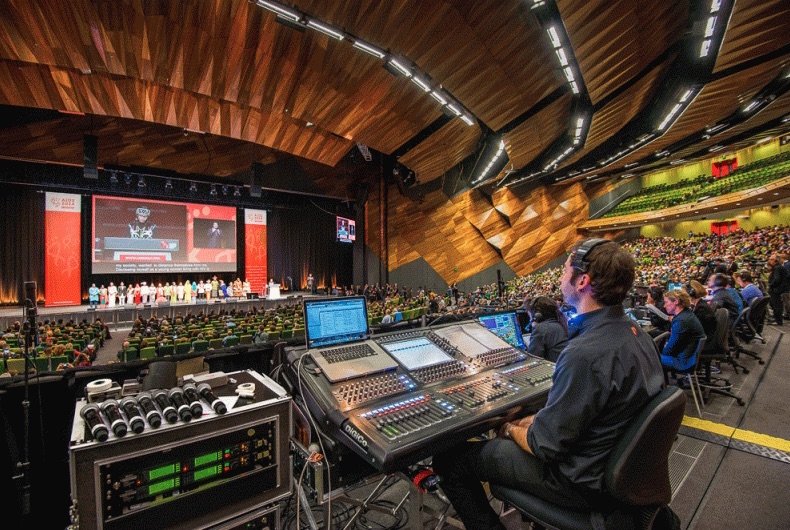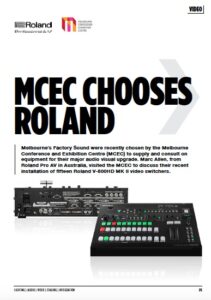News
2 Aug 2018
MCEC Chooses Roland

Subscribe to CX E-News
 Feature – Video
Feature – Video
MCEC Chooses Roland
Melbourne’s Factory Sound were recently chosen by the Melbourne Conference and Exhibition Centre (MCEC) to supply and consult on equipment for their major audio visual upgrade. Marc Allen, from Roland Pro AV in Australia, visited the MCEC to discuss their recent installation of fifteen Roland V-800HD MK II video switchers.
Greg Cavanagh, the Manager for Technology Specialist Services, Justin Hampell, Vision Specialist, and Jamie Girling, Vision Services Coordinator, generously spent the day talking about the MCEC’s production vision and how they have integrated the V-800HD MK II into their evolving infrastructure.
MA: Hi Greg, thanks for your time today. Can you tell us a bit about what you do here at the MCEC?
GC: As the Manager for Technology Specialist Services, my role is new and I started in September last year. I spent the previous four years managing the operations of the team and this new Product Development and Specialist Services role came through and I have transitioned into that.
My first focus was to re-scope the product mix that we could offer our clients. With our old infrastructure, we weren’t able to deliver proper digital signal paths with HDCP compliance. It was important to get our entry and mid-level offerings to a stage where they could tick almost every box, and then create another tier up that will do the slightly more complex productions for our clients.
We have over 52 meeting spaces here at the MCEC and we spent three million dollars on our fibre upgrade when we switched over from SDI, and that infrastructure allows us to send signal throughout the complex.
MA: Was there much involved in your decision to incorporate the V-800HD MK II?

Greg Cavanagh
GC: For two years we had been searching for a new video mixer that would meet the requirements that we had set out at the beginning of the project. We were looking to replace our fleet of analogue switchers with a fleet of switchers that have digital capabilities, HDCP compliance, and the ability to send multiple vision sends to different locations.
Everything that we could find that could do all of that was way out of the price range we were looking for, as all of our customers were screaming for something at a lower price point. They were looking for a Barco PDS-902 equivalent, something that could do digital, which was really inexpensive. We couldn’t find anything appropriate.
Once the V-800HD MK II got released, we saw the price point and thought that it made a lot of sense. I think we originally considered the MK I, and at the time we thought that we had scoped for this ‘Unicorn’ that could do absolutely everything including all sorts of matrix switching.
The auxiliary outputs also drew us to the MK II. We needed the capability to send different discreet vision signal elsewhere. Often there will be additional screens in the room that will need separate content or videoconference sends, so now we have the capability of doing that with the new switchers.
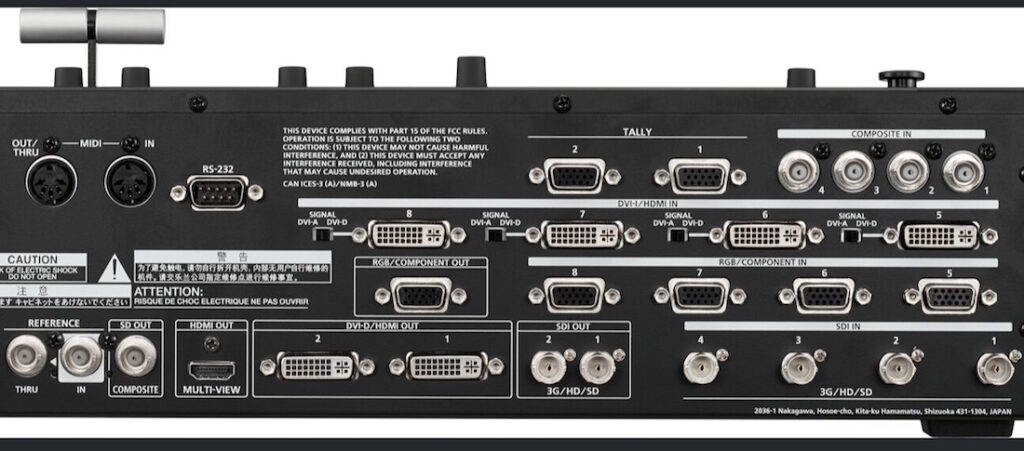
MA: Do you get asked to do many webcasts at the MCEC?
GC: Yes, we do a lot of webcasting and we have definitely used the V-800HD MK II for that as well. We use GoToMeeting for a lot of our streaming, especially if we have presenters who can’t make it into the building but they want to be able to interact with the audience. We can also send them an audience shot if we set up the camera for it. With the MK II we have lots of options, which is good.
MA: As part of the process, did you consider IP based solutions?
GC: We did. One of the things that we know that our customers want is the personalised touch and for them to have the security of having someone actually operating their show at the back of the room.
The software options and doing everything over IP doesn’t have the actual tactile nature of the switcher, which is important to run a show properly. If you’ve got a mouse, you have to look around at where you’re going to press. Hardware is a lot easier and simpler.
The other thing is that it means that there is a lot less training involved. To know the software in and out you have to get people really trained up on it, whereas for a switcher like the V-800HD MK II, we can get people in front of it, spend two hours with them to get them across the ins and outs of the switcher and the rest of the infrastructure we have built around it, and they are ready to go!
Interestingly, there is a touch panel built into the lectern in each of the rooms so that the presenters can switch inputs and manage the event themselves.
The overwhelming feedback that we keep getting is that it doesn’t have the human touch that people need. They want someone in the room to look after them and provide them with that service. So, that’s where we decided to invest more and more into vision switchers and I suppose the evolution of that is that now we are here with fifteen of the Roland V-800HD MK II switchers.
MA: I see that the V-800HD MK IIs are built into portable frames. Can you tell us about these?
GC: With a venue as large as ours it’s really important that we have the ability to deploy our vision services as quickly and easily as possible.
Jamie: What we’ve done with the switcher is we have incorporated it into a custom designed, custom built module that has a front plate with a patch panel, the Midas DL16 which is an audio breakout box, and two integrated PCs, including three monitors for multi-view, preview and program, that all roll with the module as well as the switcher.
What it means to us is that it reduces setup time, reduces strike time and it means that the amount of gear that we have to prepare when we are actually setting up for an event, especially when the turn-around times are very tight, is minimal. This also allows our customers to come along with laptops and devices at the last minute and we can easily plug them into the front panel.
This article first appeared in the print edition of CX Magazine August 2018 pp.25-27. CX Magazine is Australia and New Zealand’s only publication dedicated to entertainment technology news and issues. Read all editions for free or search our archive www.cxnetwork.com.au
© CX Media
Subscribe
Published monthly since 1991, our famous AV industry magazine is free for download or pay for print. Subscribers also receive CX News, our free weekly email with the latest industry news and jobs.

